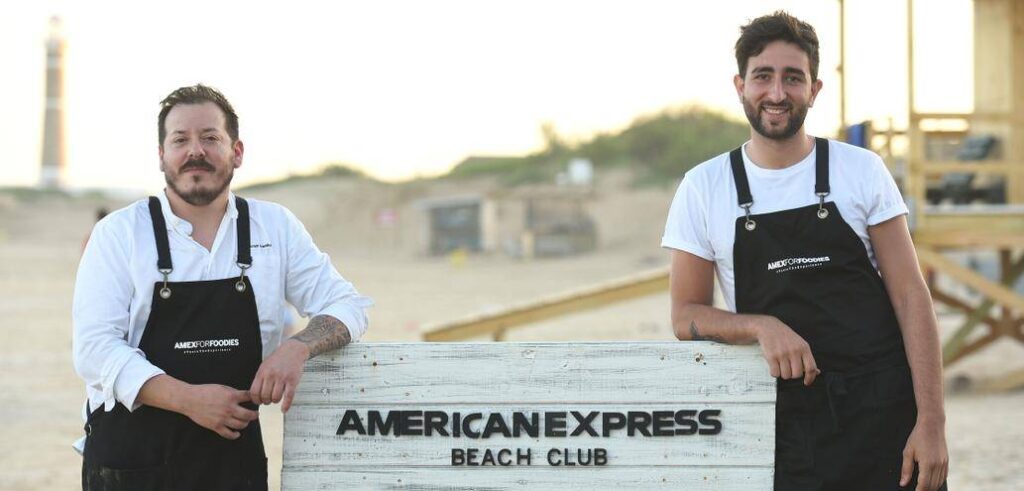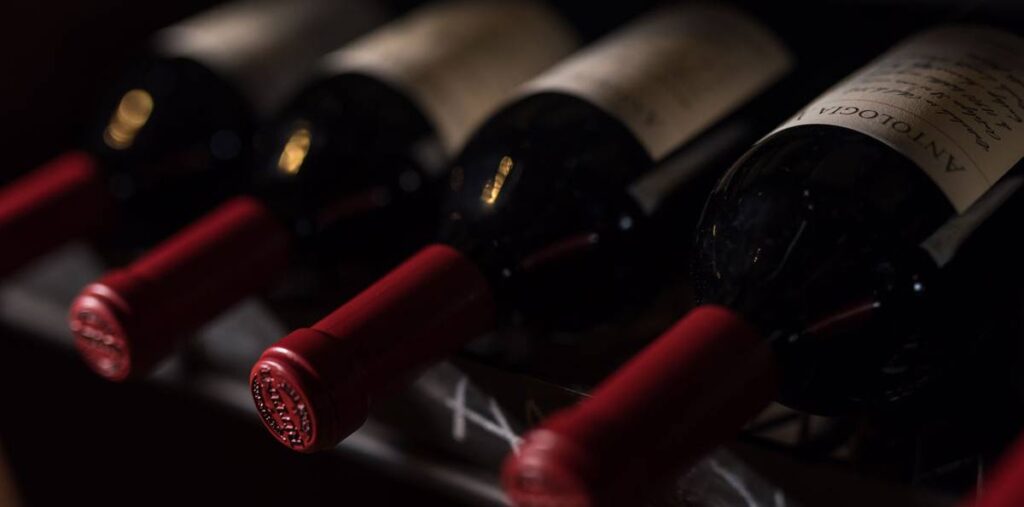The sign warns: it is 5,171 kilometers to La Quiaca, in northern Argentina.
Another sign triples the bet: 17,848 to Alaska, at the other end of the American continent.
I am at the so-called end of the world, in Ushuaia, the southernmost city on the planet.
My traveling companions represent some of the best restaurants in the country.
From the emblematic Oviedo, there is Emilio Garip, always a gentleman; also Pedro Picciau, representing the Italian corner of Italpast; Gabriel Oggero, from Crizia, and Federico Fialayre, from Tomo 1.
Together, we toured half of Argentina, invited by our host, Ernesto Vivian, founder of the famous Fuegian restaurant Kaupé, a beautiful place located in the upper part of the city.
It is a meeting of friends, or rather, of chef friends, and the group soon includes locals Emmanuel Herbin (from Chez Manu) and Lino Adilon (from Volver).
From Mendoza, Mariano Di Paola, the famous winemaker who has been making Rutini wines for more than 20 years.
The purpose of the trip?
To tour Ushuaia’s gastronomy through some of its most representative products.
For three days, our plates will parade spider crabs, black hake, lamb, scallops, sea urchins, mussels and trout, among others.
“The spider crab likes horse meat. But the bait can also be based on other meats”, says Vivian, while she explains how fishermen place traps along the Beagle Channel to obtain these crustaceans, considered one of the great delicacies of the world, direct competition (and winner) of lobsters and crabs from other parts of the world.
The spider crab, with its red shell full of spikes that easily hurt the skin, is a symbol of the maritime cuisine of Tierra del Fuego.
Difficult to obtain in Buenos Aires (there were several attempts to bring it whole and fresh, but difficulties in logistics and the exclusive tax system of the island made it impracticable for now), in these latitudes it is part of the menu of most restaurants, either in empanadas, in salads, as a filling for pasta or, the best and simplest, served in its natural state, after just a boiling that allows us to recognize its unique flavor.
We tried our first spider crab at Chez Manu, a restaurant located on the way to the Martial Glacier, a space with large windows that allow us to see the city from above, and with a fish tank -replicated in thousands of photos on Instagram by tourists from all over the world- in which four spider crabs move in a hypnotic way.
Being one of Ushuaia’s gastronomic pioneers, Emmanuel maintains his passion for cooking, where he takes French techniques, local products and his own vision to think of delicate and delicious dishes.
For tonight, he thought of an off-menu menu, an offering to his chef friends.
The spider crab arrives as a first step, served in its natural state and also in a mince with a tartare touch.
It is followed by the best dish of the night, a cream of sea urchin served in the shell itself, a unique and intense flavor that arrives tamed by the cream, and is accompanied by a skewer of smoked cojinoba, a small and tasty fish typical of these cold Magellanic waters.
To finish, two wild trout of about four kilos each come out of the kitchen, fly-fished and cooked in a crust of fine salt, egg white and herbs, which envelops them and prevents them from drying out in the heat of the oven. “The most consumed product here is lamb”, says Vivian, a perfect host during these days, who will take us from one restaurant to another, will tell us about the island’s economy, the local customs, the changes that took place during the last decades and the changes that should still happen.
“The Fuegian lamb, of less than 10 kilos, is different from the rest of Patagonia. Because of the pastures, because of the proximity to the sea, it is especially rich, it has little fat, the meat is delicate. But in Kaupé we do not prepare it. It is that, with the view we have of the Beagle, we prefer to take care of the products of the sea. And there are many places where it is prepared in multiple ways. In this I am traditional: I like it grilled.
And it is grilled as they do it in Haruwen, a tourist complex on Route 3, 36 kilometers from Ushuaia, in a forest where beavers and peat bogs (obtaining peat, an ecological fertilizer) abound.
Haruwen is managed by a youthful Damián Muriel, who is also a collector of antique objects that are scattered in this restaurant, from mechanical toys to typewriters or rickety posters.
In a rotisserie, the lambs take on color and texture, dripping their fat on the coals that return carnivorous aromas in the form of smoke.
Meanwhile, Damián tells me about the area and promises, at the end of lunch, to take me on his ATV to tour the peat bogs.
Thus, he allows me to step on that spongy peat surface, so strange to the touch, where the foot sinks, without getting wet.
There is still a lot to try and to repeat.
At Los Cauquenes Hotel we will try more lamb and spider crab, as well as a fantastic seafood soup.
At Volver, one of those unforgettable places that you cannot – should not – miss in Ushuaia, with Lino as host, there will be a large whole crab of four kilos, cooked live and direct in front of our eyes, to split its claws at the same table and eat it by hand, in a somewhat primitive and, therefore, so seductive way.
But we have to save our strength for the big dinner at Kaupé, Vivian’s restaurant.
We started with the drinks: from his personal wine cellar, our host chose bottles designed for each dish, in a vertical tasting by Felipe Rutini.
We uncorked unique labels, from the Felipe Rutini 1994 and 1996 to very recent vintages, 2012 and 2013, which are not yet on sale, and which were brought by their maker, Mariano Di Paola, along with a perfect white Anthology, a blend of Chardonnay, Semillon and Gewurztraminer.
The dinner includes several courses, and the guest chefs join in to offer some of their preparations.
Gabriel Oggero makes crab croquettes (similar to spider crab, smaller in size and intense in flavor) that are exquisite.
Federico Fialayre bets on a shrimp chupe, spicy and tasty, ideal for the Patagonian climate.
Pedro Picciau brought his lasagna dough on the plane, fearing that it would be confiscated, which fortunately -for us- did not happen.
And Ernesto Vivian completes the menu with natural spider crab, with cojinoba ceviche, with a perfect octopus (in this case, imported, although sometimes you can get a local one).
And with two great stars of the night: the deep-sea scallops, the best I have ever tasted, with a soft but resistant texture, delicate flavor and sea aroma. And the Patagonian toothfish, that fish with white meat and long flavor, which he prepares simply, baked in the oven, without hiding anything, just removing the skin so it is not greasy.
“These hakes are fished for the Falkland Islands side, in big ships, which leave for a whole month, that’s why they are always frozen on board. The ones I buy have to weigh at least ten kilos already cleaned, without head and tail, they are fish of 18 to 20 kilos. Many are caught with nets, at 700 meters deep, but these are caught with longlines, buoyed lines with hooks three or four kilometers long, with whole squid bait, which are left two or three days under the sea”.
I think: 2,000 meters underwater in the southernmost part of the world.
I imagine what it must be like to live down there.
Dark and cold, so close to the Antarctic ice.
Those big hakes, which can reach 200 kilos and two meters long, which are fished and exported to the most exclusive markets in the world.
That fish that is then served in luxury menus in Japan, but here where the fishing boats moor, has an even richer flavor.
The taste of being part of the DNA of this land.
Of this Tierra del Fuego.
The mystery of the spider crab It is the most typical sea product of the island of Ushuaia, but for transportation and customs reasons it is almost impossible to find it in other parts of the country.
It is obtained with traps in the Beagle Channel.



